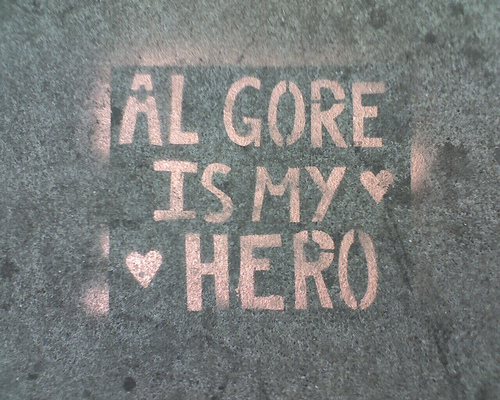Al Gore has been all over the airwaves recently proposing a challenge for America to eradicate the use of fossil fuels by 2018. I’m picking up what he’s putting down. It’s like dealing with that friend who’s always late by telling them to meet you 15 minutes earlier than when you plan to arrive. Alternative energy is the top priority of the environmental agenda, and rightly so. It slightly dwarfs the significance of making snow globes out of baby food jars. However, after we all start driving electric cars and installing affordable solar panels on our roofs, more intense focus will turn to how stuff is made, and I think green crafting is worthy of a slide or two on Mr. Gore’s next Power Point presentation. That is, if we can get his attention. Handmade is often coined as a superior alternative to mass production. The Arts and Crafts Movement of the early 20th century had the same aspirations while the Industrial Revolution was merely in its infancy, and they promoted it with much more ferocity than us. Still, artisans could not compete with technology, nor win over the hearts of consumers, and eventually stepped out of the way. The current craft movement, in comparison, embraces technology. Yet, the same idolatry remains, and torments the psyche of so many crafters I have spoken to. Many who sell their items feel there is merit to cottage industry, but are conflicted by the awareness that consumerism, in general, has consequences for our planet. Look, mass production is insurmountable at this point. If you can’t beat ’em, join ’em. I’m asking you to consider the creative input we could provide to the big corporations we generally rebel against without sacrificing our individuality. This concept is called crowdsourcing, and it’s already being utilized successfully in a growing number of industries. The convenience of disposable products and the almost infinite availability of cheap goods has perpetuated a society that is obliviously wasteful. Efforts to promote recycling over the years has been successful, but restrictive. The resourcefulness of green crafters is part of the solution. We can help bring awareness to the entire life cycle of everyday products where the only limitation is our imaginations. Let’s go back to snow globes. I would love to see any number of the suggestions given in Skye’s post printed on baby food jar labels. Would it be so far fetched for Gerber to host a contest for this? What if they even made parts to turn the jars into chandeliers or something? What if you bought a shirt at the store, and it came with simple instructions to turn it into a reusable shopping bag? How about a blurb on #6 plastic take out boxes suggesting you can use it to make shrinky dinks? Mr. Gore, which Yearn Worthy Yarn would you like your sweater knitted from? Maybe a vest would more appropriate… global warming and all. More importantly, you should know that innovative sustainability isn’t pioneered in corporate board rooms. It’s happening in the makeshift studios and garage workshops of average citizens. Image Credit: Steve Rhodes on Flickr under a Creative Commons license
